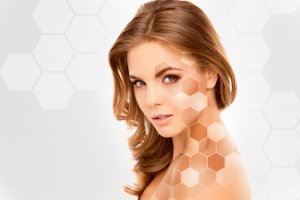What is The Fitzpatrick Scale?
 If you are thinking about a career in the medical aesthetics industry, one of the first things you will learn in laser school is The Fitzpatrick scale.
If you are thinking about a career in the medical aesthetics industry, one of the first things you will learn in laser school is The Fitzpatrick scale.
Understanding the various skin types and conditions that can affect skin color is essential for providing safe and effective laser treatments once you earn your cosmetic laser certification.
What is The Fitzpatrick Scale?
Developed in 1975 by T.B. Fitzpatrick of Harvard Medical School, The Fitzpatrick scale is the current and recognized method among the health and beauty community to classify skin colors and measure the amount of melanin in the skin after exposure to the sun.
This classification scale for skin types, also known as the Fitzpatrick skin phototype, is used by dermatologists, medical practitioners, physicians and skin care specialists to determine skin type and predict the overall risk of sun damage and skin cancer.
The Fitzpatrick scale is often interpreted as a way to measure an individual’s skin color, but it really looks at the skin’s reactivity to the sun when exposed.
The Fitzpatrick Skin-Typing Scale | ||
Skin Type | Skin Color | Reaction to Sun |
| 1 | Very White, Freckled or Ivory | Always Burns and Peels/Never Tans |
| 2 | White, Fair Complexion | Usually Burns/Rarely Tans |
| 3 | White to Olive | Sometimes Burns/Always Tans |
| 4 | Olive or Light Brown | Rarely Burns/Always Tans |
| 5 | Dark Brown | Very Rarely Burns/Moderately Pigmented |
| 6 | Black | Highly Pigmented/Never Burns/Tans Quickly |
Why is The Fitzpatrick Scale Important in Medical Aesthetics?
The Fitzpatrick scale is a valuable resource for laser technicians and aesthetic physicians to determine the effectiveness of cosmetic laser treatments on varying skin types.
Skin lasers have multiple modalities that need to be perfected to match each skin type. The settings are determined by the skin’s reaction to the laser light. In some instances, targeted spots in the skin can be darkened, rather than lightened or eliminated. This is most likely to happen during laser hair removal or a photofacial.
The best candidates for laser hair removal, for example, have fair skin with dark terminal hairs. Types 1 through 4 are great candidates for laser hair removal. Type 6 has a high risk of burning and hypo/hyperpigmentation issues.
It is possible to treat a client who doesn’t meet all the characteristics of any one type, so it’s best to go with the one that describes them best.
Cosmetic Laser Training at National Laser Institute
Do you have a passion for the health and beauty industry? Perhaps a career in medical aesthetics is the opportunity you have been looking for! In just two weeks, you can become a cosmetic laser tech with laser training at National Laser Institute.
Our Comprehensive Laser Course is jam-packed with valuable information and covers treatments such as laser hair removal, IPL photofacial, skin rejuvenation and skin tightening!
The first half of the course is spent in the classroom where you will learn about laser mechanics, tissue interaction and patient care. Clinicals are spent in a medical spa environment where you will watch live laser demonstrations and perform treatments on scheduled clients to gain real-world experience.
By the end of the course, you will feel comfortable and confident in your skills as a cosmetic laser tech as you will be prepared to work in any medical setting, including medical spas, physician’s offices and fitness centers!
To learn more about our cosmetic laser courses curriculum, please fill out the form on the right or give us a call at 1-800-982-6817.









